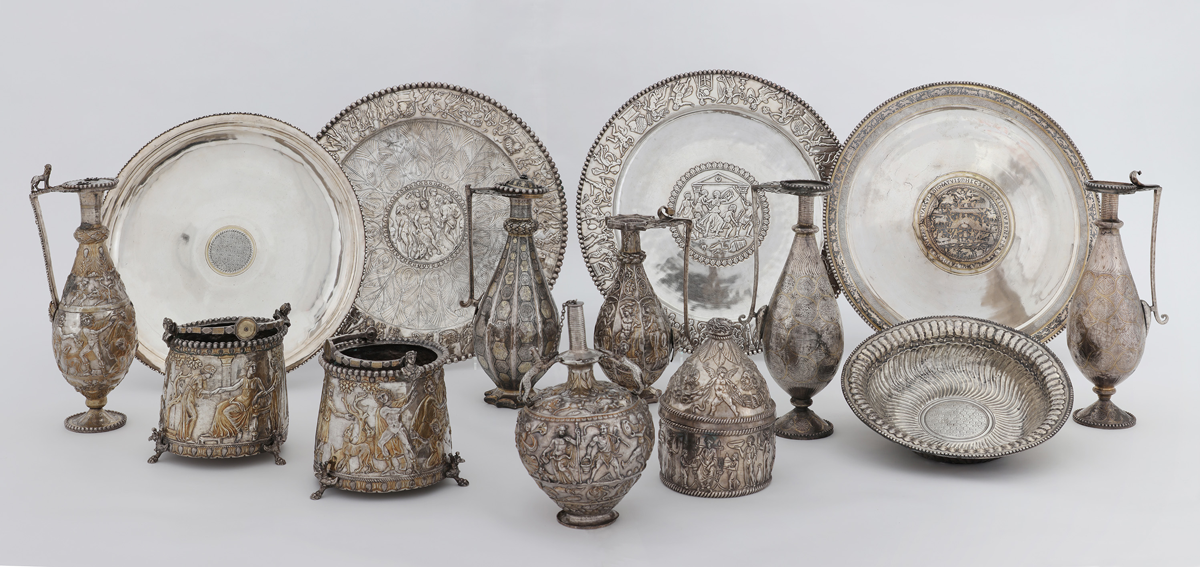The Seuso Treasure is a spectacular hoard of Roman silverwork from the late period of the Roman Empire (4th–5th centuries), so named after Seuso, its probable owner, whose name appears on the so-called Hunting or Seuso platter. Its pieces were part of a festive banqueting set and include vessels used for washing and beauty treatment. The treasure was probably buried by its owners sometime in the last decades of the 4th or the early 5th century, when they had to flee during turbulent times.
In its current form, the hoard consists of fourteen magnificent silver vessels and a large copper cauldron in which the items were hidden. Of the thirty precious metal treasure troves known to date, among them banqueting sets from the late Roman period, the Seuso treasure stands out by its superb artistic quality and material value. Bearing in mind its total weight, the silver set displayed at the exhibition can be regarded as the most opulent late Roman silver treasure known to date.
The Seuso Treasure appeared on the international art market with forged provenance documents in the 1980s. According to the Hungarian standpoint, the Seuso Treasure had been hidden in late Roman Pannonia, on the present territory of Hungary, a claim supported by the inscription Pelso, the Latin name of Lake Balaton, engraved on the eponymous platter. In the mid-1970s, a treasure trove of late Roman silver vessels concealed in a cauldron had been found on Kőszárhegy near the lake, which vanished without a trace. According to the investigations of the Hungarian police and Scotland Yard as well as to persistent archaeological detective work, the composition of the treasure trove discovered by the young man was identical with that of the Seuso Treasure.
As a result of a long and successful series of negotiations, the Hungarian state repatriated the currently known fifteen pieces of the treasure in two stages, in 2014 and 2017. It is currently on view in the Hungarian National Museum, where the public can admire this lavish late Roman treasure trove.

© Hungarian National Museum